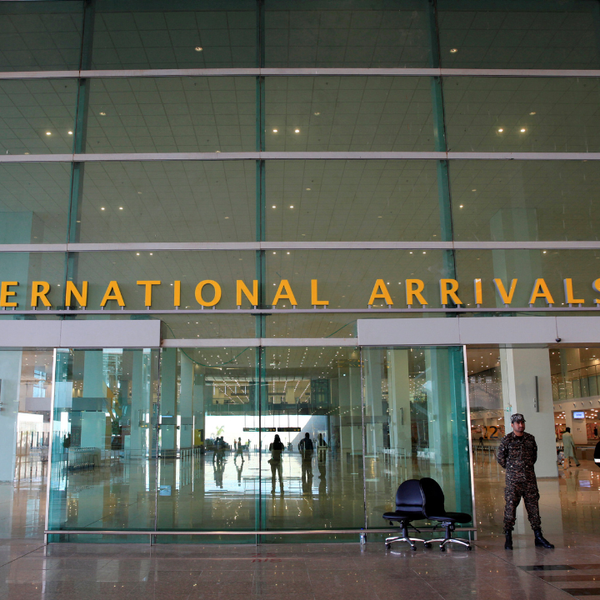The Microsoft exit that never was
Despite earning millions, Microsoft never paid local taxes or built a footprint in Pakistan over 25 years
Sheraz Khan
Senior Producer, Monitoring Desk
Sheraz Khan Rajput is a veteran journalist with nearly two decades of experience in broadcast and digital media, specializing in breaking news, scriptwriting, research, and fact-checking.

Microsoft’s presence in Pakistan was minimal — a liaison office, a few representatives, and little local investment, with operations managed from abroad.
Reuters
The headlines were hysterical.
“Microsoft pulls out of Pakistan after 25 years,” screamed one site. Others piled on, each trying to outdo the other with breathless prose, framing it as yet another corporate giant abandoning Pakistan. The subtext was obvious: this was a catastrophe.
But here’s the kicker:
Microsoft never really arrived in Pakistan in the first place.
You’d think a company like Microsoft, with a market cap flirting with $3 trillion and revenues bigger than Pakistan’s GDP, would have some sort of physical footprint. But there was nothing.
Microsoft’s presence in Pakistan was more phantom than physical — a liaison office, a few sales reps and trainers orbiting a market whose licensing and support were managed from abroad. Little was invested locally.
“It’s a misrepresentation to say Microsoft is leaving Pakistan,” said Muhammad Zohaib Khan, former chairman of the Pakistan Software Houses Association. “The truth is, they were never registered here as a tax-paying entity.”
According to Khan, the company’s Pakistani employees were not even on a local payroll. Most were hired as remote workers, and any taxes they paid were handled individually. As for investments, he said they amounted to little more than sales pushes and training sessions meant to drive adoption of Microsoft products — not to build any lasting infrastructure.
Khan noted that while Microsoft has pulled in millions of dollars from Pakistan over the past two decades, there is little sign of that money flowing back into the local economy. “They had no delivery center, no engineering hub, not even a proper support team in the country. Enterprise customers requesting help were simply referred to third-party local partners,” he said. Anyone curious about the scale of remittances, he added, could check State Bank of Pakistan's (SBP) records to see how much Microsoft product was imported annually — and how much revenue left the country.
And Khan is not alone.
Over the years, Microsoft has been accused of draining public coffers in multiple countries through aggressive tax avoidance. A 2022 report by the Center for Corporate Tax Accountability and Research found the company doing the same in Britain, Australia and New Zealand — all places where it enjoys lucrative government contracts. The tactic was simple: shift profits to subsidiaries in Bermuda and other tax havens.
In 2022, the Center for International Corporate Tax Accountability and Research (CICTAR) reported that Microsoft Global Finance, an Irish subsidiary with Bermuda tax residency, held more than $100 billion in investments and earned $2.4 billion in profit in 2020.
Tax paid: zero.
That same year in Singapore, Microsoft Holdings collected $22.4 billion in dividends. Its tax bill? A grand total of $15.
You read that right. Fifteen dollars.
When the report’s authors reached out to Microsoft, this was the company’s defense: “We respect local laws and regulations everywhere we operate.”
Translation: If you didn’t close the tax loophole, that’s your problem.
Even ActionAid International, a Johannesburg-based NGO, identified a $2.8 billion tax gap from three Big Tech companies, including Microsoft. The study singled out India, Indonesia, Brazil, Nigeria and Bangladesh as markets with the largest shortfalls.
The total tax gap across 20 countries? $2.8 billion — enough to pay 729,010 nurses, 770,649 midwives, or 879,899 primary school teachers.
Back home, in 2023, the U.S. Internal Revenue Service (IRS) hit Microsoft with a notice: it owes $28.9 billion in additional taxes, plus penalties and interest, for the years 2004 to 2013. And the IRS isn’t the only U.S. tax authority Microsoft is sparring with. In 2025, the company sued the city of San Francisco for a $14 million refund, arguing the city improperly taxed foreign income and caused double taxation. San Francisco’s response: a hard no.
For Microsoft, these disputes are just part of a bigger story. The company has been quietly reshaping its global footprint, cutting costs, and repositioning for its next act. According to Habibullah Khan, CEO of design studio Penumbra, Microsoft’s so-called exit from Pakistan fits neatly into this global pattern. It has been slashing tens of thousands of jobs worldwide as it pivots to AI-driven products.
So what does this recalibration mean for Microsoft’s profits in Pakistan? Not much. As Pakistan’s economy stabilizes, local government agencies and private firms will keep buying Microsoft products, Habibullah noted. Only now, the sales will flow through cloud services delivered by partners instead of a directly staffed office.
For Microsoft, the revenue from Pakistan doesn’t stop. It just flows in remotely, adding nothing in return to the country’s economy.







Comments
See what people are discussing